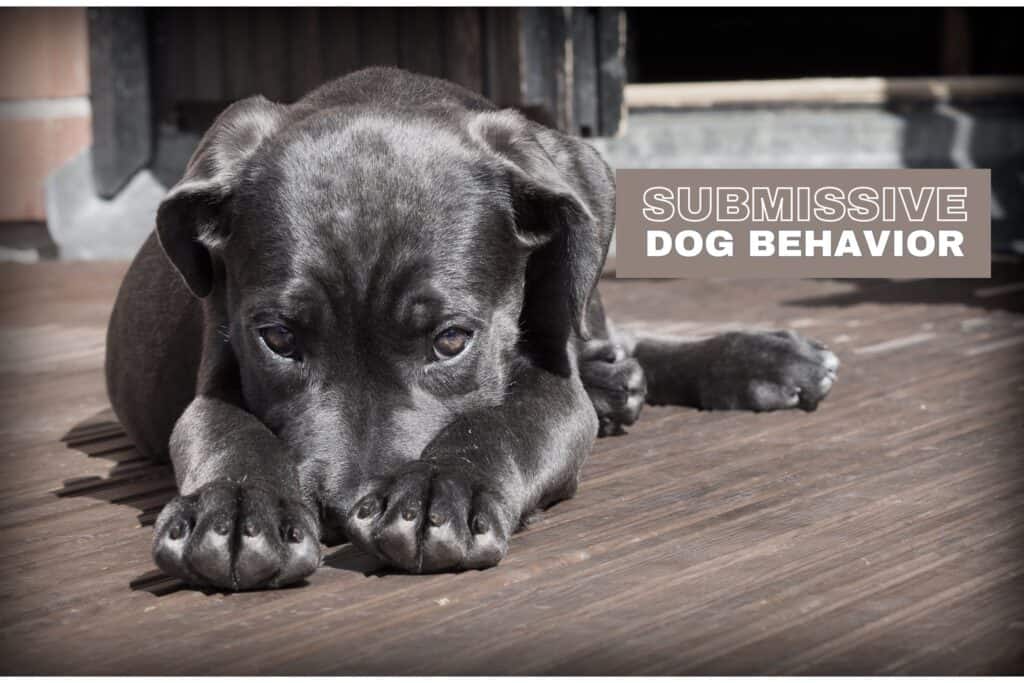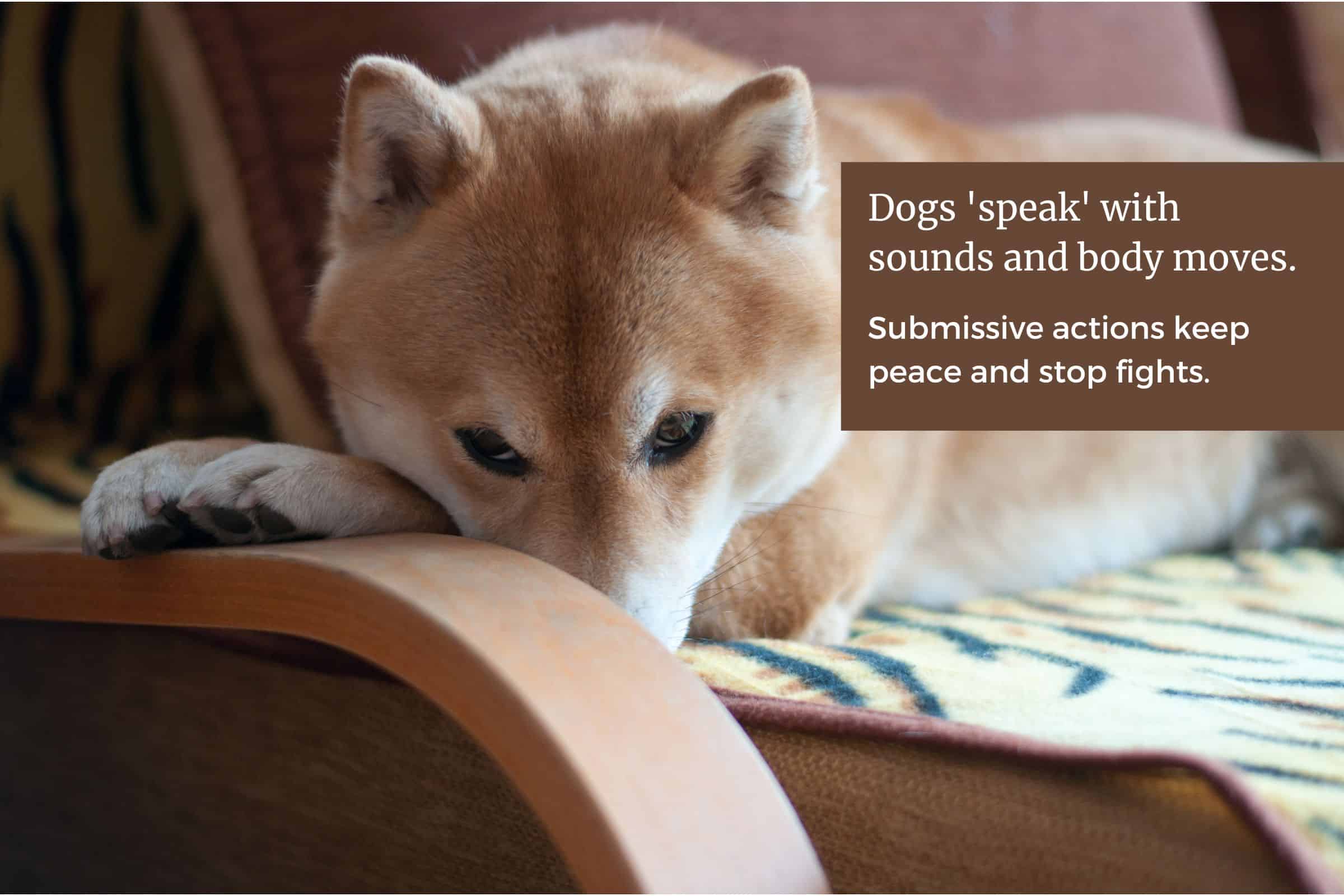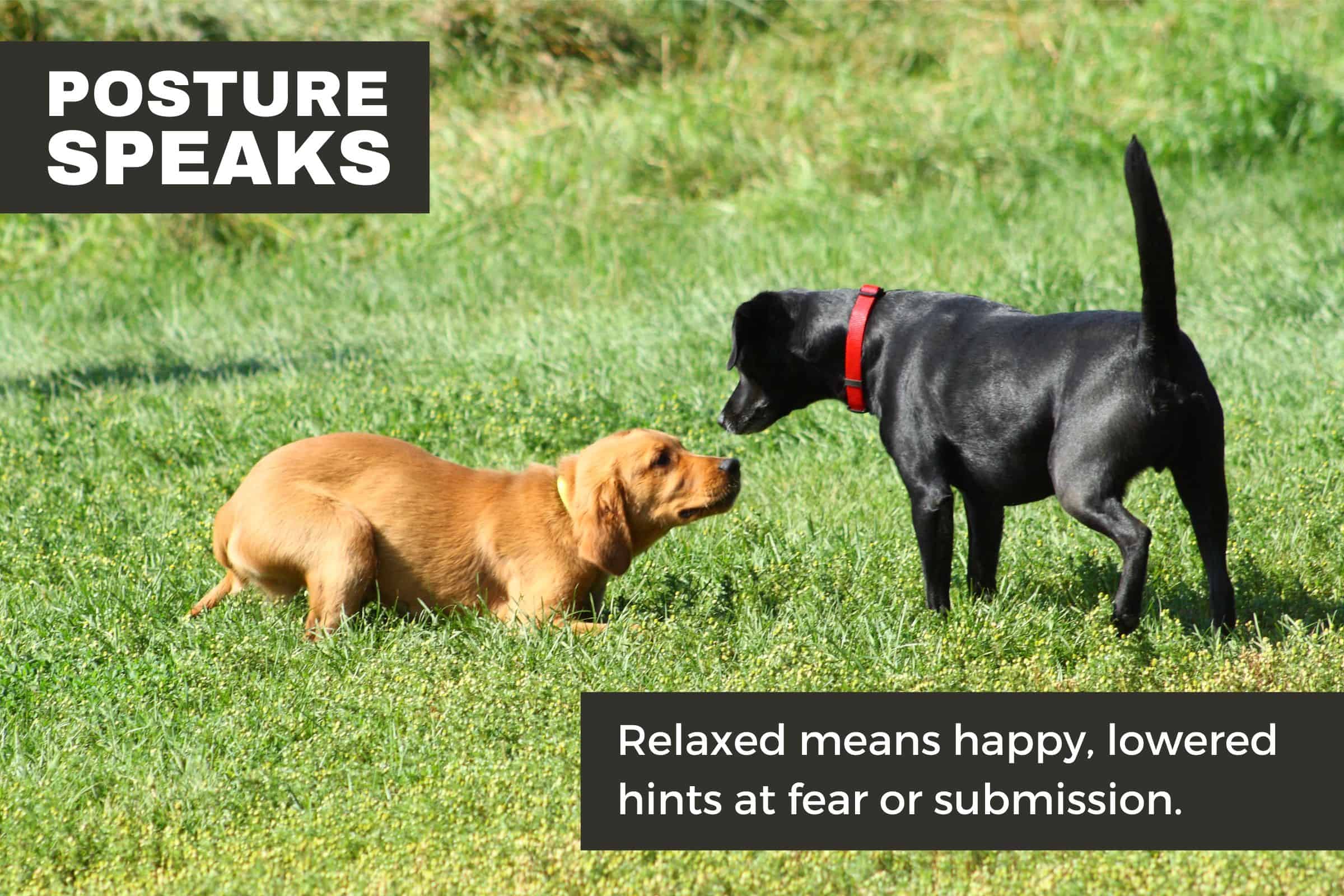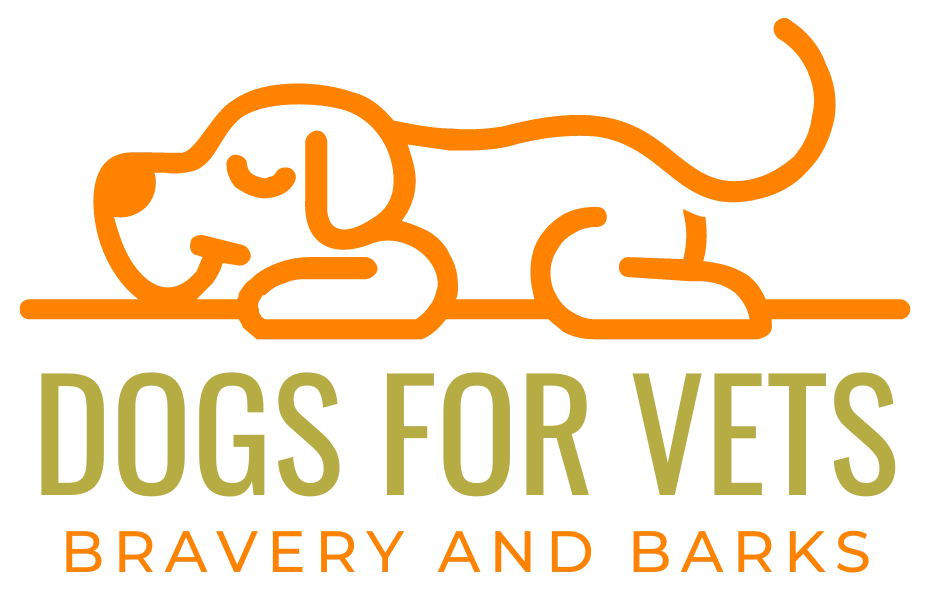This post may contain ads and affiliate links and we may earn a small commission when you click on the links at no additional cost to you. As an Amazon Affiliate, we earn from qualifying purchases. You can read our full disclaimer here.
Submissive Dog Body Language: What Your Dog is Really Saying

Understanding your dog’s body language is crucial for building a strong and trusting relationship with your pet.
Submissive dog body language involves a range of behaviors that dogs use to communicate their feelings and intentions to humans and other animals.
When a dog displays submissive signals, it’s often trying to convey respect, deference, or a non-threatening stance.

Recognizing these signals can help you respond appropriately to your dog’s emotional state and needs.
Dogs communicate through a complex mix of vocalizations and body language.
In the context of canine communication, submissive gestures are distinct and serve to maintain social harmony and prevent conflicts.
Common signs include avoiding direct eye contact, tucking their tail, licking their lips, showing their belly, or crouching low to the ground.
It’s essential to observe these cues within the full context of the situation to accurately interpret your dog’s feelings.
Developing an understanding of submissive body language enhances your ability to interact with your dog in a more empathetic and informed manner.
By doing so, you create a safer and more understanding environment for both you and your pet.
It also allows for better training outcomes, as you can tailor your approach based on your dog’s demonstrated comfort and trust levels.
Fundamentals of Dog Communication

To successfully interpret your dog’s behavior, it’s essential to grasp the basics of canine body language and the importance of socialization in shaping their communication habits.
Understanding Canine Body Language
Dogs communicate primarily through body movements and positions.
Observing your dog’s ears, eyes, tail, and posture can provide insights into their emotional state and intentions.
- Ears: Positioning can indicate curiosity (forward), aggression (pricked up), or submission (flattened).
- Eyes: Pay attention to the gaze direction and widening or squinting of eyes, which can indicate everything from focus to fear.
- Tail: A wagging tail can express happiness, while a tucked tail often shows fear or submission. Watch for the speed and direction of the wag as these details matter.
- Posture: The stance of your dog can communicate confidence or anxiety. A dog with a relaxed stance is generally content, while one with a lowered body could be showing submission or fear.
Interpreting canine body language requires you to look at the whole picture, considering all physical cues in context.
The Role of Socialization
Proper socialization plays a pivotal role in developing a dog’s communication skills.
- Relationships: Positive interactions with humans and other dogs build a better bond and confidence in social settings.
- Personality Maturation: Through socialization, a dog learns to navigate social structures and expresses personality traits effectively.
- Expression Familiarity: Dogs that are well-socialized are usually more adept at interpreting the body language of other dogs, aiding in conflict resolution and play.
Recognizing Submissive Behaviors
In this section, you will learn how to identify submissive body language in dogs through various signals including posture, facial expressions, and vocalizations.
Body Posture Indicators
Submissive body language often involves a lowered body posture.
Dogs displaying submission might cower or lower their entire body, tuck their tail, or, in more extreme cases, lie down with their belly exposed. Rolling over is a clear sign of trust as well as submission when a dog does it in the presence of people or other dogs.
Facial and Eye Expressions
When a dog is feeling submissive, their facial expressions can reflect that state.
You might notice they avoid direct eye contact, known as avoiding eye contact, or they could display what’s known as whale eye where the whites of their eyes show as they look away.
Submissive dogs may also frequently lick their lips, a sign often coupled with unease.
Tail Signals
The position and movement of a dog’s tail provide strong clues about their emotions.
A lowered tail or tail tucking, where the tail is held between the legs, is indicative of a submissive or anxious state.
The absence of wagging or very slow, uncertain wagging could further underscore feelings of submissiveness.
Vocalizations and Noise
Even though submissive dogs might not be overly vocal, certain sounds can denote submissive behavior.
You might hear a low whine, a yawn which could be a sign of stress, or submissive urination in response to social pressure. These are signs of a dog trying to appease and not threaten or challenge the perceived authority.
Other Submissive Signals
Submissive dogs often use physical gestures to communicate their status.
One such behavior includes licking another dog’s muzzle, which is a peacekeeping or appeasement gesture in dog language.
Lip licking in the absence of food can also suggest nervousness or anxiety, further underscoring a dog’s submissive state.
Interpreting Mixed Signals

Understanding your dog’s body language can be challenging when they exhibit overlapping signals of stress, playfulness, and submission.
Recognizing the nuances of these mixed signals is crucial for responding appropriately to your dog’s needs and emotions.
Stress and Anxiety Cues
Your dog may show signs of stress and anxiety through a combination of body language cues.
- Yawning: May signal discomfort rather than tiredness.
- Licking lips: Often a sign of nervousness, not just hunger.
It’s important to notice the context in which these behaviors occur to differentiate between anxiety and other states.
Aggression Versus Submissive Behavior
Aggression and submissive behaviors can sometimes be confused due to similar signals. Here’s how to distinguish them:
- Growling: Can denote aggression when accompanied by a hard stare and stiff posture.
- Submissive Signals: May include growling but is typically paired with avoiding eye contact or a lower body stance.
These cues must be interpreted in relation to each other and the situation to prevent misunderstandings in communication.
Playfulness Versus Submission
Discerning between playfulness and submission requires attention to specific behaviors:
- Play Bow:
- Signal for play: front end down, hindquarters up.
- Accompanied by bouncy movements and a relaxed, wagging tail.
- Bowing:
- As a submissive gesture: whole body lowered, not just the front end.
- Usually followed by submissive signals like avoiding eye contact or tail tucking.
Identifying the intent behind bowing behavior helps ensure that your responses reinforce the behavior you want to encourage.
Contextual Understanding of Submissive Behavior
Submissive behavior in dogs is a complex communication system that reflects their social structure and relationships.
By observing such behaviors, you gain insight into a dog’s state of mind and emotions in various environments.
Submissive Dog Body Language In the Home Environment
In your home, submissive behaviors are often a response to the dynamic between you and your dog.
Dogs may exhibit signs of submission such as lowering their body, tucking their tail, or avoiding eye contact to acknowledge your role as the authority figure.
This can be a sign of trust and respect.
For example:
- Lowering body: Dog might lie down with its belly exposed.
- Tucked tail: May accompany a lowered body to convey a submissive attitude.
- Averting eyes: Your dog might look away to avoid confrontation.
Submissive behaviors can also imply that a dog is seeking affection or trying to appease you, reflective of a positive relationship built on socialization and training.
Interactions with Other Dogs
At the dog park or during walks, observing how your dog interacts with other dogs can indicate its social hierarchy.
Submissive displays include:
- Rolling over: To expose the belly to the more dominant dog.
- Licking another dog’s muzzle: Seen as a respectful greeting gesture.
These behaviors suggest that your dog acknowledges the dominance of the other, which is crucial for preventing conflicts and fostering smooth social interactions among dogs.
Positive Training and Reinforcement
In the context of training, focusing on positive reinforcement methods reinforces submissive behavior positively without inducing fear.
This includes rewarding your dog for submissive gestures, which can strengthen your relationship and mutual respect.
Use treats, praise, or affectionate petting to:
- Affirm submissive postures: Encourages trust-building in your leadership.
- Promote calm submission during training: Helps maintain a focused and stress-free learning environment.
Submissive behaviors should not be confused with fear; rather, they should be seen as a way for your dog to communicate its respect for your guidance during training sessions.
Beyond Submissive Behavior

Submissive dog behavior often signals trust and respect, but it’s important to distinguish it from signs of fear or abuse.
As a responsible pet owner, understanding these differences and knowing how to build a healthy bond with your dog is crucial.
Recognizing Signs of Abuse or Neglect
When observing dog behavior, signs of abuse or neglect can sometimes mimic submissive actions.
However, these are often accompanied by fear-based behaviors such as tucked tails, flattened ears, and avoidance of eye contact. If a dog consistently shows these behaviors, it may indicate a deeper issue than just submission.
- Signs of Neglect:
- Lack of grooming (matted fur, overgrown nails)
- Malnourishment or dehydration
- Physical injuries left untreated
- Signs of Abuse:
- Excessive fearfulness or aggression
- Cowering or flinching when approached
- Submissive urination without any apparent cause
Fostering Confidence and Trust
To move beyond submissive behavior, focus on fostering confidence and trust in your dog. This involves providing consistent positive experiences and using positive reinforcement.
Affection and praise should be given when your dog displays confidence rather than submission.
- Ways to Foster Confidence:
- Provide structured training sessions.
- Celebrate small victories with treats and affection.
- Encourage playtime to build assurance.
- Trust-Building Activities:
- Regular walks and interaction with new environments.
- Calm, consistent handling and petting.
- Maintaining a stable routine.
Building a Healthy Owner-Dog Relationship
A thriving owner-dog relationship is rooted in mutual trust and respect rather than dominance or fear. To cultivate this, emphasize clear communication and always lead with empathy and understanding toward your dog’s emotions.
Key Relationship Aspects:
- Respect: Recognize your dog’s individual needs and limits.
- Bond: Spend quality time to strengthen your bond.
- Communication: Learn to read and respond to your dog’s body language appropriately.
Conclusion to Submissive Dog Body Language

Recognizing submissive dog body language is essential in fostering a strong and healthy relationship with your pet. It’s a clear form of communication that helps you understand your dog’s emotions and behavior.
Paying attention to their body language allows you to respond appropriately and build a bond of trust and respect.
Some key signs of submission in dogs include:
- Ears back: This often signifies the dog is trying to appear smaller and less threatening.
- Avoiding eye contact: A dog may look away to indicate they are not challenging you.
- Lowered body: A submissive dog might crouch or lower their body to show deference.
- Tail tucking: A tail between the legs is a classic sign of submission.
- Licking lips or nose: This can be a sign of anxiety or submission when interacting with people or other dogs.
By being knowledgeable about these actions, you can interpret your dog’s feelings and intentions better.
Remember, submissive behavior isn’t something to discourage. It’s a natural form of canine communication that can signal peace and a willingness to cooperate.
Building on your understanding of body language can enhance the bond with your dog. It is essential for a harmonious coexistence and helps in identifying when your dog is comfortable or may need additional care or space in certain situations.
Stay observant and responsive to your dog’s nonverbal cues to maintain a compassionate and mutually respectful relationship.
-

Coffee Mug – In Dog Coffees I’ve Only Had One
Price range: $11.95 through $14.95 Select options This product has multiple variants. The options may be chosen on the product page
